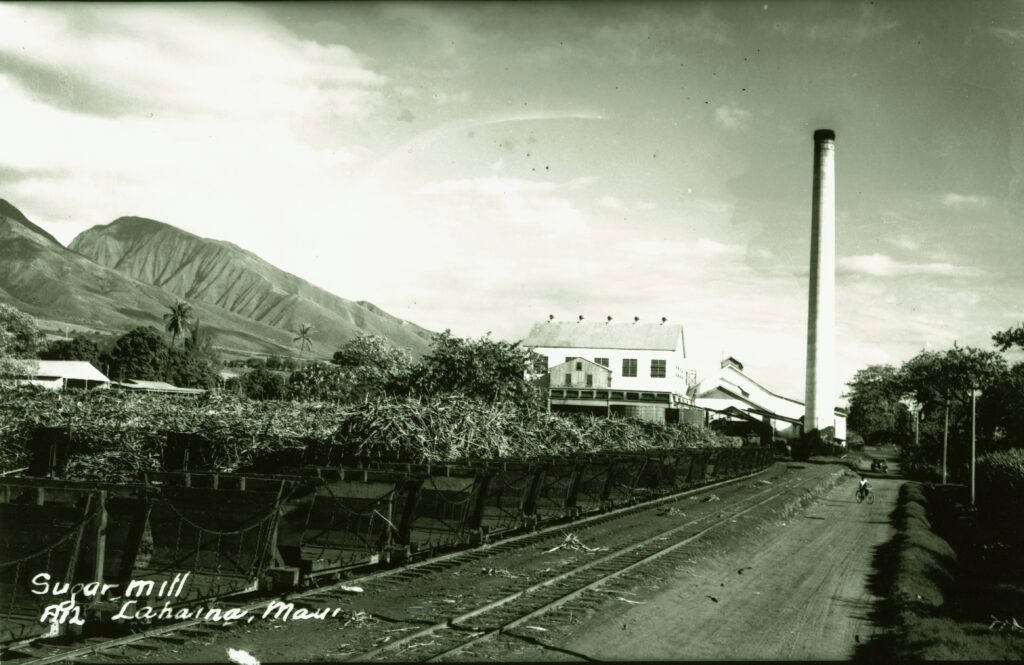Jodo Buddhism was founded by Saint Honen in 1175. The word Jodo, from which the name of the sect was derived, means “Pure Land,” is the name given to the Western Paradise or the realm of Amida Buddha, the Buddha of Infinite Life and Light.
Today, these teachings have spread to all corners of the world. It was introduced to Hawaiʻi in 1894 and continues to grow here.
Japanese immigration to Hawaiʻi that began in 1868 marked the beginnings of large-scale settlement and, with it, the establishment of a strong religious base of Buddhism.
The Lāhainā Jodo Mission was founded in 1912 with the support of many Japanese immigrants then working in the nearby sugar and pineapple plantations.
After the original temple was destroyed in a fire in 1968, the members of the Mission decided to build a Japanese style Buddhist temple on the beachfront property that provided an idyllic setting.
The Great Buddha and the Temple Bell were completed in June 1968 to commemorate the Centennial Anniversary of the first Japanese immigrants to arrive in Hawaiʻi
In 1970, the main Temple and Pagoda were built with the generous and wholehearted support of the members of the Mission as well as the general public. Masao Omori, a Japanese philanthropist, donated the expertise of Japanese craftsmen that was necessary for the construction of the buildings and the casting of the Buddha.
The present temple stands on the exact spot of the former temple building. The new structure was built by traditional Japanese carpenters with the help of our members and friends. Lāhainā Jodo Mission is a unique Buddhist temple with its architectural structure that blends Japanese and Western styles.
One of the most interesting features is the solid copper shingles that cover the rooftops of both the Temple and the Pagoda. All the shingles were individually hand-made and are interlocked on all four sides, forming a solid copper sheeting. Also, the traditional construction of the wooden beams allows the pieces to interlock without the use of nails.
Inside the temple, five Buddhist paintings adorn the walls. These were painted in 1974 by the renowned Japanese artist Iwasaki Hajin. In later years, Mr. Iwasaki painted beautiful floral ceiling paintings and produced two paintings depicting the dream of Saint Honen (1133-1212) meeting the Chinese Pure Land Master Shantao (613-681).
The 12-feet tall copper and bronze statue of Amida Buddha is the largest of its kind outside Japan. It was cast in Kyoto, Japan, from 1967 to 1968, and weighs approximately three and a half tons. The Great Buddha was completed in June 1968, as a commemorative project for the early Japanese immigrants.
Made of bronze, on one side of the temple bell (the ocean side) are the words Imin Hyakunen no Kane (The Centennial Memorial Bell for the First Japanese Immigrants to Hawaii) cast in Chinese characters. On the other side are the characters Namu Amida Butsu, which means “Save me, oh, Amida Buddha.”
The Pagoda, or Temple Tower, is approximately 90-feet high at its tallest point. The covering of the roof is made of pure copper. The first floor of the pagoda contains niches to hold the urns of deceased members.
At Lāhainā Jodo Mission, the temple bell is rung eleven times each evening at 8 o’clock.
The first three rings signify the following:
• I go to the Buddha for guidance
• I go to the Dharma (the teaching of the Buddha) for guidance
• I go to the Sangha (Brotherhood) for guidance
The next eight rings represent the Eight-Fold Pathway to Righteousness:
• Right Understanding
• Right Purpose
• Right Speech
• Right Conduct
• Right Livelihood
• Right Endeavor
• Right Thought
• Right Meditation
According to Buddhist legend, when Sakyamuni Buddha entered Nirvana, his body was cremated at Kusinara. Seven of the neighboring rulers, under the leadership of King Ajatasattu, demanded the ashes be divided among them.
At first, the king refused their demands and a dispute ensued, threatening to end in war. But a wise man named Dona intervened and the crisis passed. The ashes were divided and enshrined in eight great stupas in India.
The ashes of the funeral fire and the earthen jar that contained the remains were given to two other rulers to be likewise honored. Because of the enshrinements, followers came to worship and pay homage to these stupas, also called pagodas, which later became a symbol of the spiritual image of the Buddha. (Information here is from lahainajodomission-org)




































